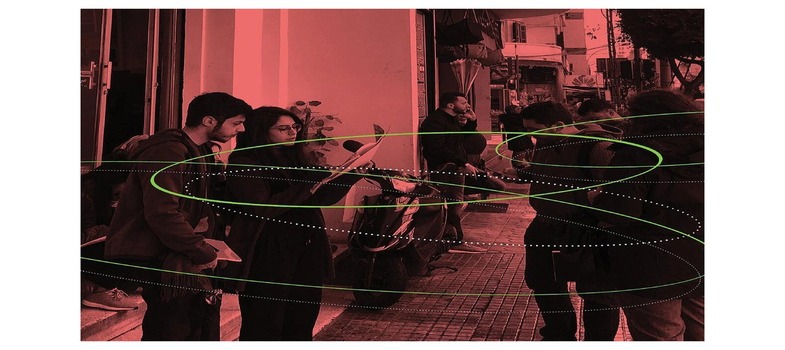2.8 Creative ways of listening
This video features Mustafa Ismail, MA student, UCL Institute of Education and Cinderella Al Homsi, research assistant, UCL RELIEF Centre. In the video, Cinderella and Moustafa practice using another interview technique that could help them listen more closely to people’s feelings. We recommend watching the videos with English subtitles as they contain both English and Arabic.
During the interview, Cinderella draws a simple map while Moustafa describes the highs and lows of his commute to university in Cairo. Cinderella asks him to identify three key points during the journey, then asks him to rate how he feels at each point. She uses a simple template that looks like this:

Figure 1: Template used by Cinderella to capture feelings
Cinderella uses this template to draw his journey from home to university as a continuous line moving between the happy face and sad face.
The process provides Cinderella with the data that helps her understand Moustafa’s feelings during his journey. Moustafa describes how the image helped him understand his feelings better too. You could use this method of participatory creative production or create your own. You can ask your research participants to create an image themselves, or do it together as in this example.
Exercise
Create a map of a day’s typical journey with a family member or close friend using the template below - then take a photo of your map and share it on the Journey Map Padlet.
Look through some of the other maps before making your comments below.
Over to you
In the forum, consider whether this process helped you to listen more closely to what your participant had to say, or help them say it more clearly.
Downloads
See also
An article discussing ways of using arts based elicitation approaches to find out about refugee students' access to information.
An article discussing how to use arts-involved methods to generate rich data.
